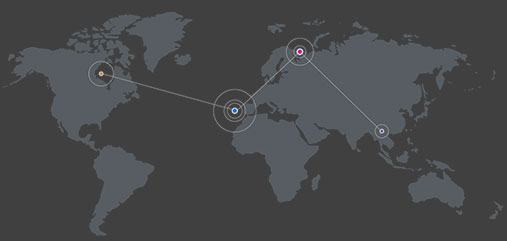免費咨詢熱線: 0538-3280336

| 立柱機械手專業(yè)保養(yǎng)維護Professional maintenance of column manipulator |
| 發(fā)布時間:2024-04-04 10:19:55 | 瀏覽次數(shù): |
立柱式機械手作為自動化設備中的重要組成部分,其專業(yè)保養(yǎng)維護對于確保其長期穩(wěn)定運行、提高生產(chǎn)效率和延長使用壽命至關(guān)重要。以下是立柱機械手專業(yè)保養(yǎng)維護的一些關(guān)鍵環(huán)節(jié)及注意事項: 1. 定期檢查與清潔 : ? 外觀檢查 :定期檢查機械手本體、立柱、滑軌、連接件等部位是否有銹蝕、裂紋、變形、磨損等情況,及時修復或更換受損部件。 ? 清潔工作 :清除機械手表面及周邊環(huán)境的灰塵、油污、切削液等雜質(zhì),防止異物進入內(nèi)部影響性能。特別注意清理各關(guān)節(jié)處、線纜保護套內(nèi)部、旋轉(zhuǎn)軸密封圈等易積塵區(qū)域。 ? 潤滑管理 : ? 按需潤滑 :依據(jù)設備手冊推薦的潤滑周期和規(guī)格,對各運動部件(如關(guān)節(jié)軸承、齒輪、絲杠、導軌等)進行定時定量的潤滑。使用指定的潤滑油或潤滑脂,并確保油脂涂抹均勻,避免過度或不足。 ? 潤滑系統(tǒng)檢查 :如果機械手配備自動潤滑系統(tǒng),應定期檢查系統(tǒng)的工作狀態(tài)、油路是否暢通、油脂存量是否充足,以及分配器是否正常工作。 ? 電氣系統(tǒng)維護 : ? 電纜檢查 :定期檢查動力電纜、信號線纜的絕緣層是否破損,接頭是否松動,確保電氣連接可靠。對于柔性拖鏈內(nèi)的線纜,要檢查其在運動過程中的磨損情況。 ? 控制系統(tǒng)維護 :確保控制器、驅(qū)動器、傳感器等電氣元件工作正常,無異常報警。定期備份系統(tǒng)程序,以防數(shù)據(jù)丟失。定期清理控制柜內(nèi)積塵,保持散熱良好。 ? 接地檢測 :確認機械手接地系統(tǒng)有效,防止靜電積累和電氣干擾。 ? 功能測試與校準 : ? 精度檢查 :使用標準工具或設備對機械手的定位精度、重復定位精度、關(guān)節(jié)扭矩等進行檢測,如超出允許范圍應及時調(diào)整或維修。 ? 動作測試 :運行全行程的動作序列,觀察是否存在異常振動、噪音、卡頓等現(xiàn)象,檢查速度、加速度設定是否合理,確保運行順暢。 ? 安全功能驗證 :檢查急停按鈕、限位開關(guān)、光柵、壓力傳感器等安全裝置的功能有效性,確保在異常情況下能及時停機,保障人員和設備安全。 ? 部件更換與壽命管理 : ? 易損件更換 :根據(jù)使用時間和磨損程度,定期更換密封件、濾芯、皮帶、電池(如備用電池)等易耗品。 ? 關(guān)鍵部件壽命跟蹤 :對電機、減速機、軸承等關(guān)鍵部件的運行小時數(shù)進行記錄,接近或達到廠商建議更換周期時,提前安排預防性更換。 ? 文檔記錄與培訓 : ? 維護記錄 :每次保養(yǎng)后詳細記錄檢查結(jié)果、維修內(nèi)容、更換零件型號及數(shù)量、下次保養(yǎng)時間等信息,形成設備維護檔案。 ? 操作與維護培訓 :定期對操作人員和維護人員進行機械手操作規(guī)范、日常維護要點及應急處理措施等方面的培訓,提升全員設備管理水平。 綜上所述,對立柱機械手的專業(yè)保養(yǎng)維護應涵蓋機械、電氣、功能測試等多個方面,并遵循設備制造商提供的維護手冊進行定期檢查、潤滑、調(diào)試和部件更換,同時做好維護記錄與人員培訓,確保機械手始終處于良好工作狀態(tài)。如有復雜故障或需要專業(yè)技術(shù)支持的情況,建議聯(lián)系設備供應商或授權(quán)服務商進行處理。 As an important part of automation equipment, the professional maintenance of the column manipulator is essential to ensure its long-term stable operation, improve production efficiency and extend service life. The following are some key links and precautions for the professional maintenance of column manipulators: 1. Regular inspection and cleaning : ? Visual inspection Regularly check whether there is rust, cracks, deformation, wear and tear in the manipulator body, columns, slide rails, connectors and other parts, and repair or replace damaged parts in time. ? Cleaning Remove dust, oil, cutting fluid and other impurities on the surface of the manipulator and the surrounding environment to prevent foreign matter from entering the interior and affecting the performance. Special attention should be paid to cleaning the dust-prone areas such as the joints, the inside of the cable protective sleeve, and the sealing ring of the rotating shaft. ? Lubrication management : ? Lubrication on demand According to the lubrication cycle and specifications recommended in the equipment manual, lubricate each moving part (such as spherical bearings, gears, lead screws, guide rails, etc.) regularly and quantitatively. Use the specified oil or grease and make sure the grease is evenly applied to avoid over- or under-lubrication. ? Lubrication system inspection If the manipulator is equipped with an automatic lubrication system, the working status of the system, whether the oil circuit is smooth, whether the grease stock is sufficient, and whether the distributor is working normally should be checked regularly. ? Electrical system maintenance : ? Cable inspection Regularly check whether the insulation layer of the power cable and signal cable is damaged and whether the joints are loose to ensure that the electrical connection is reliable. For cables in flexible energy chains, check for wear and tear during movement. ? Control system maintenance : Ensure that the controller, driver, sensor and other electrical components are working normally, and there is no abnormal alarm. Back up your system programs regularly in case of data loss. Regularly clean up the dust in the control cabinet and keep the heat dissipation good. ? Grounding detection : Confirm that the grounding system of the robot is effective to prevent the accumulation of static electricity and electrical interference. ? Functional testing and calibration : ? Accuracy check : Use standard tools or equipment to detect the positioning accuracy, repeated positioning accuracy, joint torque, etc. of the manipulator, and adjust or repair it in time if it exceeds the allowable range. ? Movement test Run the action sequence of the whole stroke, observe whether there is abnormal vibration, noise, jamming and other phenomena, check whether the speed and acceleration settings are reasonable, and ensure smooth operation. ? Verification of safety functions Check the functional effectiveness of emergency stop buttons, limit switches, gratings, pressure sensors and other safety devices to ensure timely shutdown in abnormal situations and ensure the safety of personnel and equipment. ? Component replacement and life management : ? Replacement of wearing parts : Replace consumables such as seals, filter cartridges, belts, batteries (such as spare batteries) periodically according to the time of use and the degree of wear. ? Critical component life tracking Record the operating hours of key components such as motors, reducers, and bearings, and arrange preventive replacement in advance when approaching or reaching the manufacturer's recommended replacement cycle. ? Documentation and training : ? Maintain records After each maintenance, record the inspection results, maintenance content, replacement parts model and quantity, next maintenance time and other information in detail, and form equipment maintenance files. ?Exercise |
| 上一篇:埃斯頓碼垛機器人保養(yǎng)維護Estun palletizing robot maintenance 下一篇:庫卡KUKA碼垛機器人保養(yǎng)維護Maintenance of KUKA palletizing robots |

微信二維碼
聯(lián)系我們
本森智能裝備(山東)有限公司
電話:156 8882 9575
郵編:0538- 3280336
網(wǎng)址:www. fymaduoji. com
地址:山東省泰安市肥城市高新技術(shù)開發(fā)區(qū)

版權(quán)所有:本森智能裝備(山東)有限公司 電話:15688829575 備案號:魯ICP備19062121號-1